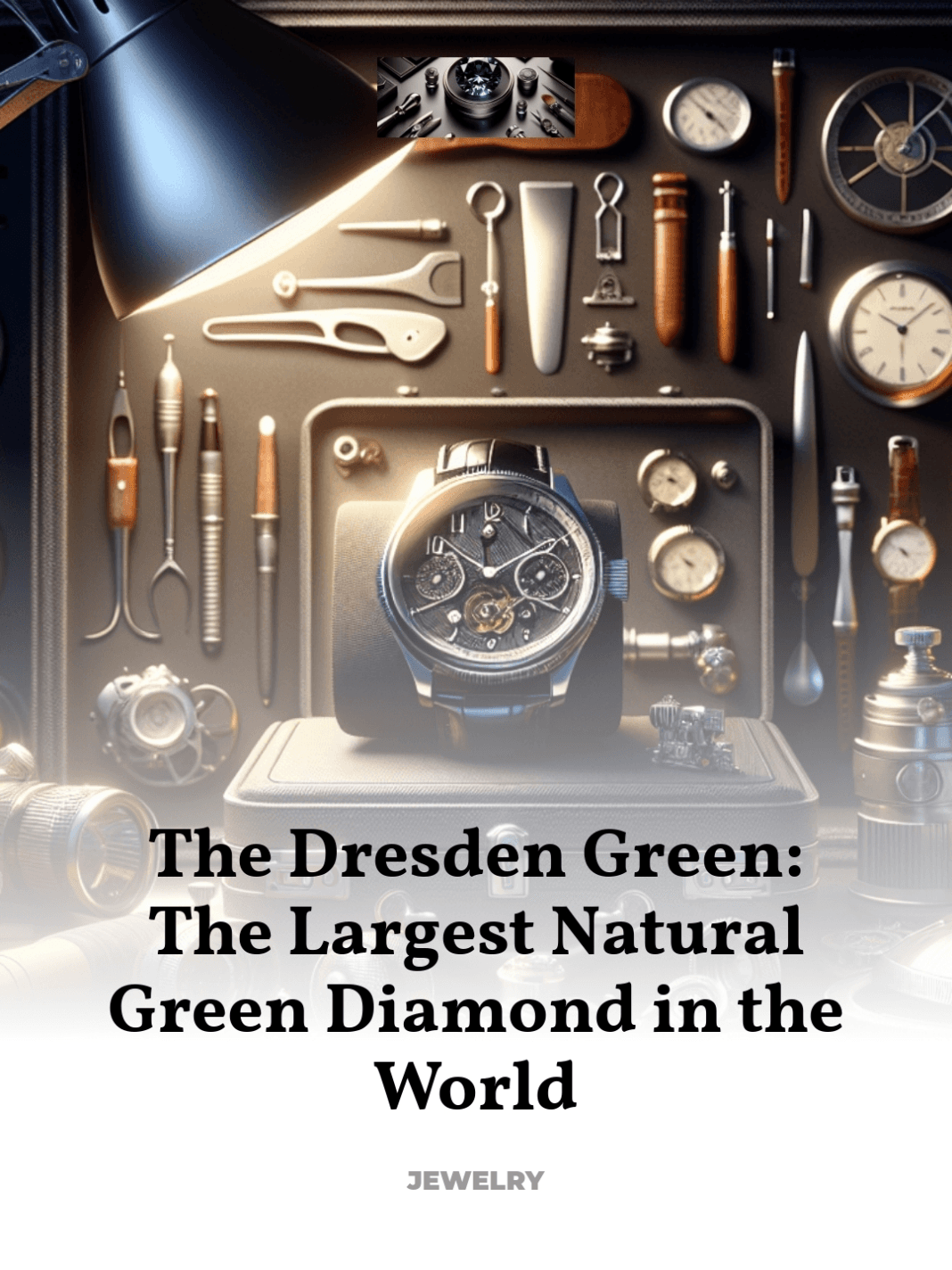Why this rare gem remains a mystery in the world of diamonds
The Dresden Green Diamond, a marvel of nature’s artistry, stands as a paragon of the rare and the beautiful in the world of gemstones. This extraordinary gem, known for its unique green hue and impressive history, continues to captivate enthusiasts of luxury, craftsmanship, and heritage.
- Historical Journey of the Dresden Green Diamond
- Unique Characteristics of the Dresden Green Diamond
- Cultural and Artistic Symbolism
- The Enduring Mystery of the Dresden Green
- Impact on Modern Gemology and Jewelry
Historical Journey of the Dresden Green Diamond
The Dresden Green Diamond, with its rich verdant color, is not only a natural wonder but also a piece of living history. Discovered in the Golconda mines of India, an area famous for producing some of the world’s most illustrious diamonds, this gem’s journey to Europe in the early 18th century marks the beginning of its legendary status.
Acquired by Augustus II the Strong, Elector of Saxony and King of Poland, the diamond became a part of his royal collection housed in Dresden. It is here that the diamond gets its name, forever linked to the cultural and historical heritage of its adopted city. The gem was set in various pieces of jewelry throughout the centuries, reflecting the changing tastes and artistic styles of European nobility.
During World War II, the Dresden Green was moved to a fortress to protect it from bombing raids, demonstrating its significant value and the lengths to which guardians went to preserve this treasure. Post-war, it returned to Dresden and has been a highlight of the Green Vault museum, attracting scholars and enthusiasts alike who seek to glimpse its rare beauty.
Unique Characteristics of the Dresden Green Diamond
The Dresden Green stands out in the gemological world due to its rare natural green color. This color is believed to be the result of natural radiation exposure over millions of years, altering the crystal structure and enabling the diamond to absorb red light, thus reflecting a green hue. Weighing approximately 41 carats, its almond-shaped cut enhances both its size and color, making it a marvel to behold.
Advanced testing by the Gemological Institute of America (GIA) confirms the diamond’s color as natural, categorizing it as a Type IIa diamond, which is chemically the purest type of diamond with exceptional optical transparency. The Dresden Green’s clarity is remarkably high, and it is free of any color enhancements or treatments, making it not only rare but also invaluable as a study specimen in natural history.
Cultural and Artistic Symbolism
The Dresden Green Diamond has been a symbol of wealth, power, and artistic taste since its integration into European nobility. Its presence in the Green Vault and its survival through numerous historical upheavals symbolize endurance and timelessness, resonating with cultural narratives of resilience and continuity.
Artistically, the diamond has influenced fashion and jewelry design trends across centuries. Its unique green color has been replicated using other gemstones and materials, reflecting its status as a trendsetter in the luxury goods industry. Moreover, the diamond’s history is intertwined with the arts through its depictions in paintings and its role in festive adornments, enhancing its cultural footprint.
The Enduring Mystery of the Dresden Green
Despite its well-documented history, the Dresden Green retains an air of mystery. Questions about its exact origins, the process of its coloration, and the full extent of its journey before reaching European shores remain partially answered. The scientific community continues to study this gem, seeking insights into its unique properties and the geological conditions that created it.
The allure of the unknown adds to the Dresden Green’s mystique, making it a perpetual subject of interest and speculation in the world of gemology. This mystery keeps the diamond not only as a historical artifact but also as a continuing source of scientific inquiry and exploration.
Impact on Modern Gemology and Jewelry
The Dresden Green Diamond has significantly impacted modern gemology, providing researchers with insights into the formation of colored diamonds. Its study has led to advancements in the understanding of diamond coloration processes, influencing both academic research and practical gemstone processing techniques.
In the realm of jewelry, the Dresden Green continues to inspire designers aiming to blend historical craftsmanship with contemporary aesthetics. Its enduring beauty and unique color highlight the possibilities of incorporating rare natural elements into modern designs, appealing to a clientele that values both tradition and innovation.
For further exploration of this magnificent gem, esteemed institutions such as the Green Vault museum offer in-depth resources and exhibitions that showcase not only the Dresden Green Diamond but also other treasures of equal historical and artistic significance.



